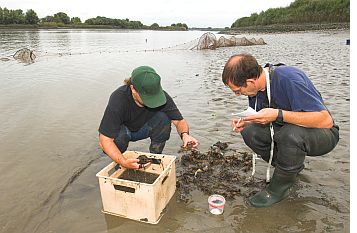News
SPIRAL "UK National Ecosystem Assessment" paper publshed
A new paper has been published based on work carried for SPIRAL, authored by Kerry Waylen and Juliette Young. This paper focuses on the first phase of the UK National Ecosystem Assessment.
Upcoming Event
No upcoming events.
Full description
 In WP 3 we will research the effectiveness of science-policy interfaces in developing and supporting mechanisms for encouraging social behaviour that reduces negative human impact on biodiversity and ecosystems.
In WP 3 we will research the effectiveness of science-policy interfaces in developing and supporting mechanisms for encouraging social behaviour that reduces negative human impact on biodiversity and ecosystems.
This WP will consider the different ways in which the science-policy interface influences human behaviour having an impact on biodiversity and ecosystems. Policy (influenced by, and influencing, science), can seek to control, regulate, incentivise or otherwise influence behaviour. Science information, processed through various public and private media, can also influence behaviour directly. The science-policy interface is crucial both in determining the feasibility and effectiveness of different policy instruments, and in determining which instruments policy makers choose to develop. This WP seeks to explore these relationships, developing explanations for current practice, and making recommendations for improvements.
We will examine the ways in which different arguments and mechanisms (including biodiversity targets and indicators, scenarios, ecosystem service concepts, incentivisation measures, policy appraisal and risk assessment methods) can be used to influence behaviour, in particular (but not only) by conveying information about how biodiversity underpins all ecosystem services that are vital for human existence. This WP will also examine how the different mechanisms can improve the ways in which scientific, ethical, moral and stewardship principles are integrated into policy making.
While WP 1 examines existing experience with biodiversity science-policy interfaces, and WP 2 focuses on constraints of such interfaces in relation to the communication on the role of biodiversity, WP 3 assesses if policy instruments in the widest sense are effective in influencing biodiversity-relevant social behaviour.
As such we will address the need to analyse and explain the reasons for the relative emphasis placed on biodiversity targets and indicators relative to other reasons or mechanisms for encouraging behaviour that may reduce negative human impact on biodiversity, and design mechanisms to improve the effective integration of consideration of scientific, economic, ethical, moral and stewardship principles into policy making.
Identify and assess the major mechanisms designed to discourage (encourage) behaviours that have negative (positive) impacts on biodiversity.
 We will conduct a literature review capitalising on existing knowledge on the use of various mechanisms for encouraging social behaviour to reduce negative human impact on biodiversity. The review will cover the ways in which biodiversity targets, indicators, appraisal methods, market-based instruments, scenarios and other mechanisms can be used to influence behaviour. The review will examine how the mechanisms can improve the ways in which scientific, economic, ethical, moral and stewardship principles are integrated into policy making. It will also assess the ways in which research addresses its own role in supporting different mechanisms in affecting social behaviour. The review will include reports from previous and on-going projects and initiatives such as SEBI 2010 (Streamlining European 2010 Biodiversity Indicators), and academic and grey literature. We will also establish links with the project POLICYMIX to work in synergies and avoid redundancies.
We will conduct a literature review capitalising on existing knowledge on the use of various mechanisms for encouraging social behaviour to reduce negative human impact on biodiversity. The review will cover the ways in which biodiversity targets, indicators, appraisal methods, market-based instruments, scenarios and other mechanisms can be used to influence behaviour. The review will examine how the mechanisms can improve the ways in which scientific, economic, ethical, moral and stewardship principles are integrated into policy making. It will also assess the ways in which research addresses its own role in supporting different mechanisms in affecting social behaviour. The review will include reports from previous and on-going projects and initiatives such as SEBI 2010 (Streamlining European 2010 Biodiversity Indicators), and academic and grey literature. We will also establish links with the project POLICYMIX to work in synergies and avoid redundancies.
Identify science-policy and science-society interfaces that promote development and implementation of mechanisms designed to discourage (encourage) behaviours that have negative (positive) impacts on biodiversity.
This task consists of an analysis of the science-policy interfaces that promote the development and implementation of mechanisms having the potential to influence social behaviour. Particular attention will be paid to ways in which the potential for affecting social behaviour to reduce negative human impact on biodiversity is considered in the science-policy dialogue. Analysis will assess the ways in which scientific, economic, ethical, moral and stewardship principles are integrated in policy making. We will assess the extent to which different science-policy interfaces influence the potential (direct or indirect) impact on social behaviour of policy mechanisms.
Identify the expected, actual and perceived strengths and weaknesses of these mechanisms, and the interfaces that develop and implement them.
 This task will extend the results of the above analyses, and draw on stakeholder expertise via interviews and two focused workshops, involving science and policy stakeholders involved with mechanisms for reduced negative human impact on biodiversity. The workshops will critically evaluate the relative success (actual or potential) of different mechanisms in different contexts, including the consideration of synergies and conflicts between different combinations of mechanisms and interfaces. Through interviews and the first workshop, we will develop a set of criteria against which to evaluate each of the different mechanisms/interfaces, and a set of policy contexts in which a mechanism/interface might be deployed. We will develop two matrix reporting frameworks, for mechanisms and for interfaces, and produce a fact sheet for each mechanism and each interface. The fact sheets will include recording evaluations for each criterion in each context, highlighting synergies/conflicts, and a brief summary of actual experience. The final workshop will refine and validate the fact sheets, allowing for the reporting of convergent or divergent stakeholder opinions under each category.
This task will extend the results of the above analyses, and draw on stakeholder expertise via interviews and two focused workshops, involving science and policy stakeholders involved with mechanisms for reduced negative human impact on biodiversity. The workshops will critically evaluate the relative success (actual or potential) of different mechanisms in different contexts, including the consideration of synergies and conflicts between different combinations of mechanisms and interfaces. Through interviews and the first workshop, we will develop a set of criteria against which to evaluate each of the different mechanisms/interfaces, and a set of policy contexts in which a mechanism/interface might be deployed. We will develop two matrix reporting frameworks, for mechanisms and for interfaces, and produce a fact sheet for each mechanism and each interface. The fact sheets will include recording evaluations for each criterion in each context, highlighting synergies/conflicts, and a brief summary of actual experience. The final workshop will refine and validate the fact sheets, allowing for the reporting of convergent or divergent stakeholder opinions under each category.
Recommend steps to improve science-policy and science-society interfaces to develop and/or contribute to the uptake of mechanisms for encouraging behaviours that reduce negative human impact on biodiversity.
A synthesis will be produced of the complete process of research in the preceding tasks, drawing in particular on the results of the stakeholder consultation. The synthesis will be used to justify recommendations for improvements in the science-policy process, including generic recommendations relevant to science-policy interfaces.




